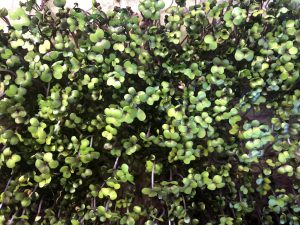Hello Marters and welcome back to my Bryn Mawr Blog. This is Jacqueline. My last blog is about growing your own food and in this blog, I will share with you several lessons I learnt while growing them.
You can’t be 100% prepared. Just do it!
Before I start growing anything, I watch numerous video tutorials. I was so worried that I would do anything wrong. I didn’t start until I felt I was ready, but I wasn’t ready at all. The first difficulty I encounter is to scatter the seeds evenly. If the seeds are cluttered together, then the microgreens will be crowded at one place and sparse at another. This is something I didn’t expect because in all the video I’ve watched, this process is so easy. But I later figure out how you can spread them out with your hands or use the help of a spice jar. It teaches me not to worry about a perfect start, but instead start doing it and then you will learn in the process.
Mother Nature is Generous and Forgiving.
When I plant the microgreens for the first time, I underwater and then overwater them. For the first few days, I just use the spray bottle to spray several times, which is way less than what they need. After I find it not working, I water them more frequently, thus sometimes I might overwater them. In addition, my room doesn’t have any south-facing windows so there is no direct sunlight. With a shadowy environment and various watering issues, my first batch of microgreens still turn out to be fine. They are definitely not the most successful ones I’ve grow but they are decent.

What Appears Good is Not Always Good.
As mentioned in the last lesson, my room doesn’t get enough light and I didn’t have any professional grow light. So I put my plants under my lamp. The light does help them to grow better at first but I later find them to be too leggy. After doing my research, I learnt that the light needs to be only one or two inch above the plants so that they could get enough light but also not to stretch themselves to reach for the light. This observation reminds me that what appears good is not always good and what looks bad is not necessarily bad.
Struggle isn’t Always a Bad Thing
In the last blog, I note that it’s important to keep the microgreens in a dark place until they sprout so that they could have solid root system. If they are exposed to light from the beginning, they don’t struggle to get any light and their roots would be weak. Weak root system might not be too much a problem for microgreens, but it is for plants harvest at more mature stage. For the microgreens who don’t have light for the first few days, they struggle a lot compared to those who get light from the beginning, but in the time of struggling, they build up a solid root system that is fundamental for their further growth. Thus, the next time I feel myself struggling in a difficult situation, I can remind myself of this observation and convince myself that struggle is not always a bad thing.

Recognize the Failed Attempts
During the seed starting phrase, I put two or three seeds into one hole so that at least something will come out. Having more number of seeds than the number of holes means that not every seed has the chance of sprouting and too often the one that sprouted gets noticed and the one that didn’t sprout get ignored. It reminds me to pay attention to the attempts that didn’t work out and don’t be afraid of failing.
Staying in the Present Moment
When I first scatter the seeds, I get really excited and can’t help but envisioning what it is like to see them grow. As they are growing, I couldn’t wait to harvest them. After harvesting, I try out different dishes to consume them as soon as possible. And after that, I miss growing them. In this whole process, my mindset is inconsistent with what’s happening in reality. I’m either a step ahead or behind. I always worry about what will happen next or miss what did happen. I didn’t enjoy the process. Growing plants is a reminder for me to relax and stay in the present moment: to enjoy seeing them growing everyday, to enjoy consuming them in different dishes.



